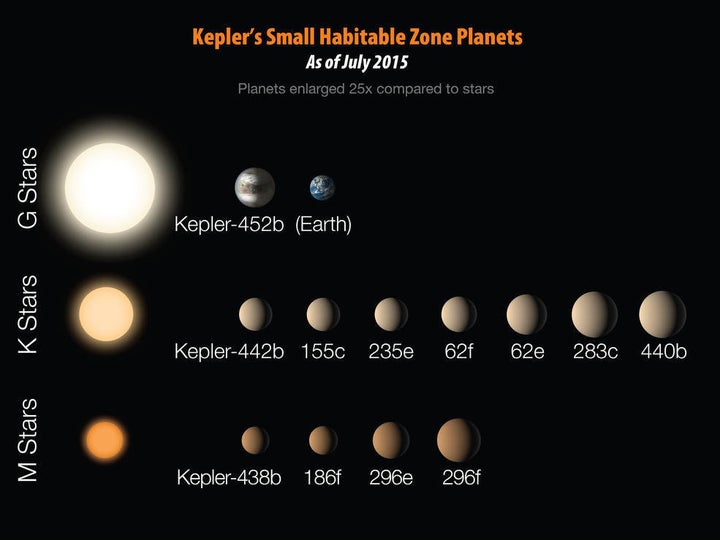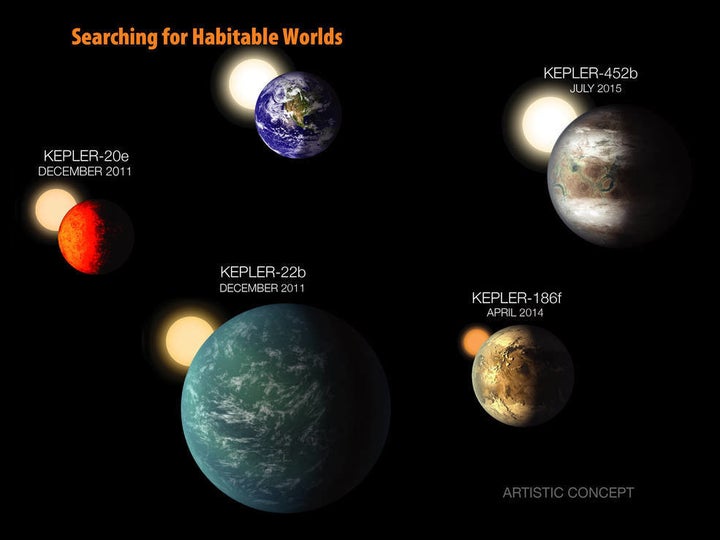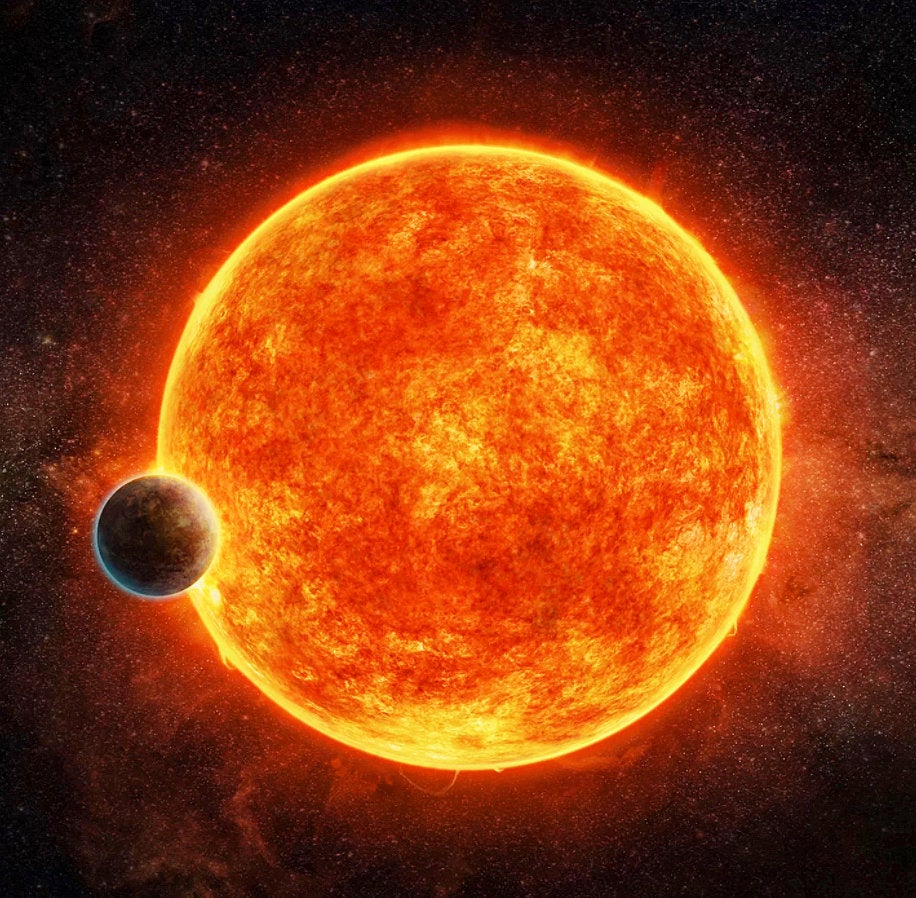Say hello to Earth’s bigger and older cousin.
NASA scientists have discovered an Earth-like planet some 1,400 light-years away orbiting a star similar to the sun, they revealed during a press conference Thursday morning.
The newfound planet, named Kepler-452b, is the smallest planet yet discovered orbiting the habitable zone of a G2-type star, like our sun. The discovery of Kepler-452b brings the total number of planets confirmed by NASA's Kepler mission to 1,030. It is the most similar to Earth of all of them.
"This exciting result brings us one step closer to finding an Earth 2.0," Dr. John Grunsfeld, associate administrator of NASA's Science Mission Directorate at the agency's headquarters in Washington, D.C., said in a statement.

Kepler-452b is about 60 percent larger in diameter than Earth. Scientists haven't yet determined its mass and composition, but it is likely a rocky world. The planet is about 5 percent farther from its parent star than Earth is from the sun -- but the alien world still orbits within its star's habitable zone.
"This is the closest thing that we have to another planet like the Earth," Dr. Jon Jenkins, Kepler data analysis lead at NASA's Ames Research Center in Moffett Field, California, said in a teleconference. "It would feel a lot like home based on the sunshine."
Jenkins led the team that discovered Kepler-452b.
The planet's host star, named Kepler-452, appears to be 1.5 billion years older than our sun, at 6 billion years old. It has the same temperature as our sun and is about 20 percent brighter and 10 percent larger in diameter.
"It’s awe-inspiring to consider that this planet has spent 6 billion years in the habitable zone of its star; longer than Earth," Jenkins said in the written statement. "That’s substantial opportunity for life to arise, should all the necessary ingredients and conditions for life exist on this planet."

To confirm the discovery of the Kepler-452 star system, researchers conducted ground-based observations of the distant star and planet at three sites: the University of Texas at Austin's McDonald Observatory in West Texas, the Fred Lawrence Whipple Observatory in Arizona and the W. M. Keck Observatory atop Mauna Kea in Hawaii.
The researchers' observations and analyses helped to determine Kepler-452b's size and orbit and the brightness of the Kepler-452 star.
"The detection of this planet demonstrates Kepler's ability to fulfill its original mission goal: to detect Earth-like planets in the habitable zones of sun-like stars, and to measure their frequency," Dr. Heather Knutson, assistant professor of planetary science at the California Institute of Technology in Pasadena, told The Huffington Post in an email. "This is a question of fundamental interest to exoplanetary scientists, and is closely related to the search for life beyond our own solar system."
Before the discovery of Kepler-452b, alien planet Kepler-186F held the record for being the most like Earth, Jenkins said in the teleconference.

In addition to discovering Kepler-452b, the Kepler team also has identified 521 celestial objects that could potentially be planets, raising the number of planet candidates detected by the Kepler mission to 4,696.
The team identified more candidates after analyzing observational data collected from May 2009 to May 2013. Before candidates are confirmed as planets, follow-up observations and analyses are required.
The Kepler spacecraft launched in 2009 and has been seeking out exoplanets in our Milky Way galaxy ever since. New planets pop out every time the Kepler team sifts through data, according to The New York Times.
The team's latest findings have been submitted for publication in the Astrophysical Journal.
Clarification: Language has been amended to reflect that the McDonald Observatory is not itself in Austin, Texas; it is merely affiliated with the University of Texas at Austin.
